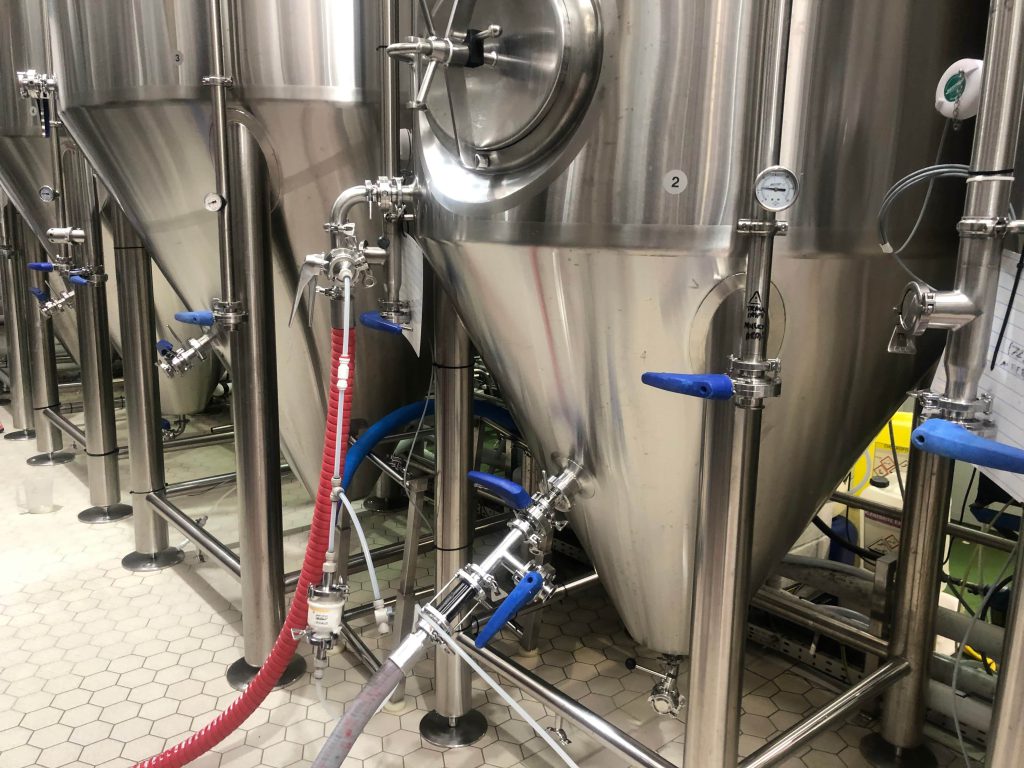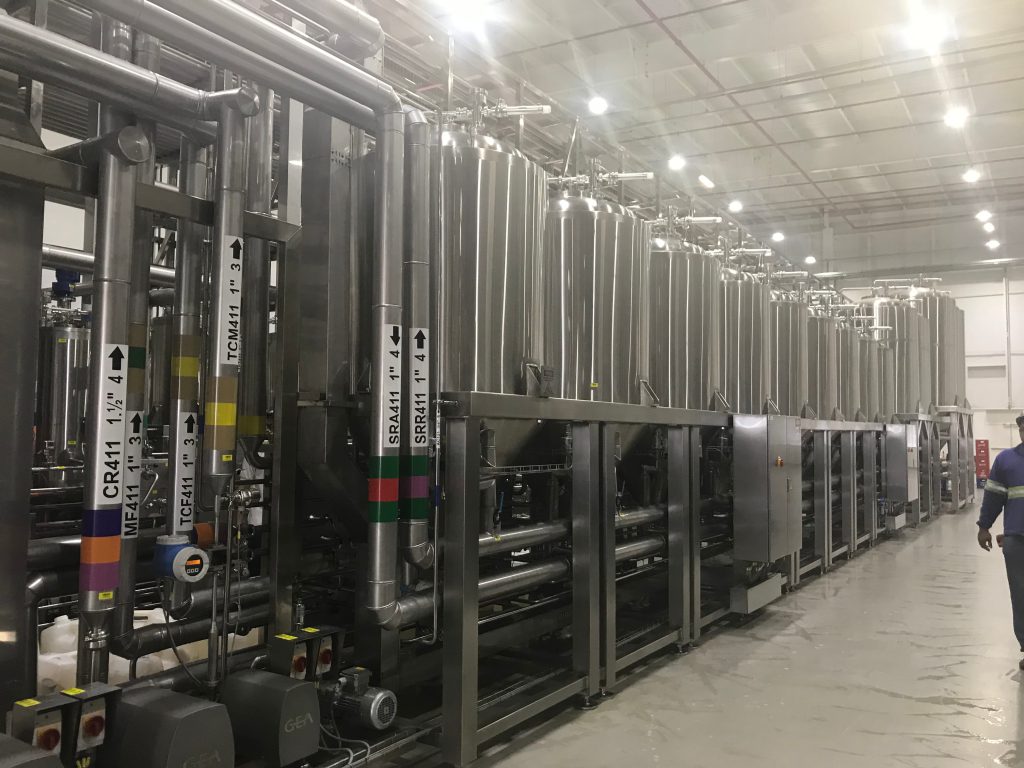Introduction

The art of fermentation, a time-honored tradition spanning cultures and centuries, relies heavily on the unsung hero: the fermentation vessel. From the simplest earthenware pots to sophisticated stainless steel tanks, the types of fermentation vessels employed significantly impact the fermentation process, influencing flavor profiles, efficiency, and scalability. Whether you’re a home brewing enthusiast, a craft beverage producer, or involved in industrial-scale bioproduction, understanding the diverse types of fermentation vessels available is crucial for achieving optimal results. This comprehensive guide delves into the various types of fermentation vessels, exploring their characteristics, applications, and considerations for selection. We will navigate through different materials, designs, and functionalities, shedding light on how each type of fermentation vessel contributes to the fascinating world of fermentation.
Understanding the Basics of Fermentation
Before we delve into the specifics of types of fermentation vessels, it’s essential to grasp the fundamental principles of fermentation. At its core, fermentation is a metabolic process that converts sugars to acids, gases, or alcohol. This transformation is typically carried out by microorganisms like bacteria, yeast, and fungi. The environment in which these microorganisms thrive plays a pivotal role in the success of the fermentation. Factors such as temperature control, oxygen exposure, and the physical characteristics of the types of fermentation vessels all contribute to the overall outcome. Choosing the right type of fermentation vessel ensures a controlled and conducive environment for the desired microbial activity, ultimately dictating the quality and consistency of the final product.
Materials Matter: Exploring Different Vessel Materials
The material composition of types of fermentation vessels is a primary factor influencing their suitability for various applications. Different materials offer distinct advantages and disadvantages in terms of durability, cleanability, cost, and potential impact on the fermentation process itself. Let’s explore some common materials used in the construction of types of fermentation vessels:
Stainless Steel Fermentation Vessels
Stainless steel is a prevalent choice for many types of fermentation vessels, particularly in commercial settings. Its non-reactive nature prevents unwanted flavors from leaching into the fermenting product, ensuring purity. Furthermore, stainless steel is robust, easy to clean and sanitize, and offers excellent temperature control capabilities, often through integrated jackets. Different grades of stainless steel exist, with 304 and 316 being commonly used due to their corrosion resistance. While the initial cost of stainless steel types of fermentation vessels can be higher, their longevity and hygienic properties often make them a worthwhile investment for consistent and large-scale fermentation.
Glass Fermentation Vessels
Glass carboys and jars are popular types of fermentation vessels for home brewers and small-scale fermentations. Glass is inert and allows for visual monitoring of the fermentation process, which can be helpful for beginners. It is also relatively easy to clean and sterilize. However, glass is fragile and can be heavy and cumbersome to handle, especially in larger sizes. Additionally, glass types of fermentation vessels do not offer the same level of temperature control as stainless steel and are typically not suitable for high-pressure fermentations.
Plastic Fermentation Vessels
Food-grade plastics, such as HDPE (high-density polyethylene), are used in some types of fermentation vessels due to their affordability and lightweight nature. These vessels are generally durable and easy to handle. However, the permeability of some plastics can be a concern for long-term fermentations, potentially allowing oxygen ingress or the absorption of off-flavors. It’s crucial to ensure that any plastic type of fermentation vessel used is specifically designed for food contact and is resistant to the chemicals produced during fermentation.
Earthenware Fermentation Vessels
Historically, earthenware pots were among the earliest types of fermentation vessels. While less common in modern commercial settings, they are still used in some traditional fermentation processes. Earthenware can offer a unique microenvironment due to its porous nature, which can influence the flavor development. However, these types of fermentation vessels can be more challenging to clean and sanitize thoroughly, and temperature control is difficult to achieve.
Design Variations: Exploring Different Vessel Designs
Beyond the material, the design of types of fermentation vessels plays a critical role in their functionality and suitability for specific fermentation processes. Different designs cater to varying scales of production, types of fermentation, and operational requirements.
Cylindrical Fermentation Vessels
Cylindrical fermentation vessels are a common and versatile design among types of fermentation vessels. Their simple cylindrical shape with a flat or slightly conical bottom is easy to manufacture and clean. These types of fermentation vessels are suitable for a wide range of fermentation processes and can be adapted with various features like spigots, airlocks, and temperature control sleeves. They are frequently used in smaller-scale brewing and winemaking.
Conical Fermentation Vessels
Conical fermentation vessels are characterized by their cone-shaped bottom. This design offers several advantages, particularly for brewing. The conical bottom allows for the settling and collection of trub (sediment from yeast and other solids), which can then be easily drained, leading to clearer final products. These types of fermentation vessels often include features for yeast harvesting and can facilitate better mixing and CO2 expulsion. Conical fermenters are widely used in craft breweries and larger-scale brewing operations.
Unitank Fermentation Vessels
Unitanks are a type of conical fermentation vessel that integrates both fermentation and maturation stages into a single vessel. These types of fermentation vessels are equipped with features that allow for temperature control at different levels, carbonation, and clarification, all within the same tank. Unitanks streamline the brewing process and reduce the need for transferring the product between vessels, minimizing the risk of contamination and oxidation. They are a popular choice for breweries looking for efficiency and control.
Horizontal Fermentation Vessels
Horizontal fermentation vessels, while less common than vertical designs, are utilized in specific applications, particularly in large-scale lager production. The shallower depth of these types of fermentation vessels can contribute to different fermentation kinetics and flavor development. They often require more floor space compared to vertical tanks of similar capacity.
Open Fermentation Vessels
Open fermentation vessels, as the name suggests, are open to the atmosphere, typically covered with a cloth to prevent contamination while allowing for gas exchange. This traditional method is still employed for certain types of fermentation, such as some styles of beer and wine, where exposure to ambient microbes can contribute to unique flavor profiles. However, open types of fermentation vessels require meticulous hygiene practices to avoid spoilage and are generally not suitable for large-scale commercial production where strict control is necessary.
Key Features and Considerations for Fermentation Vessels
When selecting among the various types of fermentation vessels, several key features and considerations come into play:
Size and Capacity of Fermentation Vessels
The scale of your fermentation operation will dictate the required size and capacity of your types of fermentation vessels. From small carboys for home use to massive tanks for industrial production, choosing the appropriate size is crucial for efficiency and cost-effectiveness. Consider your current needs and potential future growth when determining the ideal capacity.
Temperature Control in Fermentation Vessels
Temperature is a critical factor in fermentation, influencing the rate of microbial activity and the resulting flavor compounds. Many types of fermentation vessels, especially those made of stainless steel, can be equipped with temperature control systems such as cooling jackets or internal coils. Maintaining precise temperature control is essential for consistent and high-quality fermentation, particularly for processes like lager brewing that require specific temperature regimes.
Cleanability and Sanitation of Fermentation Vessels
Hygiene is paramount in fermentation to prevent contamination and ensure the desired microbial activity. The design and material of types of fermentation vessels significantly impact their cleanability. Smooth, non-porous surfaces like stainless steel and glass are easier to sanitize than some plastics or earthenware. Features like rounded corners and accessible openings facilitate thorough cleaning. Choosing types of fermentation vessels that are easy to clean and sanitize is crucial for maintaining product quality and preventing spoilage.
Pressure Tolerance of Fermentation Vessels
Some fermentation processes, such as secondary fermentation in beer or sparkling wine production, generate significant pressure. In these cases, it’s essential to select types of fermentation vessels that are designed and rated to withstand the expected pressure levels. Pressure-rated stainless steel tanks are commonly used for these applications, often equipped with pressure relief valves for safety.
Accessories and Add-ons for Fermentation Vessels
Various accessories and add-ons can enhance the functionality of types of fermentation vessels. These may include spigots for easy sampling and draining, airlocks to allow CO2 to escape while preventing oxygen ingress, sight glasses for visual monitoring, and ports for sensors and other equipment. Consider the specific needs of your fermentation process when evaluating the available accessories for different types of fermentation vessels.
Table: Comparing Different Types of Fermentation Vessels

| Feature | Stainless Steel Vessels | Glass Vessels | Plastic Vessels | Earthenware Vessels |
|---|---|---|---|---|
| Material | Stainless Steel | Glass | Food-grade Plastic | Earthenware |
| Durability | High | Low | Medium | Medium-Low |
| Cleanability | High | Medium-High | Medium | Low |
| Temperature Control | Excellent (with jackets) | Poor | Poor to Medium | Poor |
| Oxygen Permeability | Very Low | Very Low | Variable | Medium-High |
| Visibility | Limited (unless with sight glass) | Excellent | Limited | Limited |
| Cost | Higher | Medium | Lower | Medium |
| Scale of Use | Commercial, Home | Home, Small Scale | Home, Small Scale | Traditional, Small Scale |
| Pressure Tolerance | High (specific designs) | Low | Low (most types) | Low |
Conclusion
Selecting the appropriate type of fermentation vessel is a critical decision that can significantly impact the success of your fermentation endeavors. By understanding the different materials, designs, features, and considerations discussed in this guide, you can make an informed choice that aligns with your specific needs and goals. Whether you are a home enthusiast exploring the nuances of small-batch fermentation or a commercial producer aiming for consistent and scalable production, the right type of fermentation vessel will provide the foundation for successful and flavorful results. Ready to elevate your fermentation process? Contact us today to explore our range of high-quality fermentation vessels and find the perfect solution for your needs!
FAQ
What is the best material for a fermentation vessel?
The “best” material depends on your specific needs. Stainless steel offers excellent durability, cleanability, and temperature control, making it ideal for commercial use. Glass is inert and allows for visual monitoring, suitable for home brewing. Plastic is affordable and lightweight but may have permeability issues. Earthenware offers a traditional approach but can be harder to clean.
How do I clean my fermentation vessel?
Proper cleaning involves removing all organic matter and then sanitizing to eliminate microorganisms. Use appropriate cleaning solutions and sanitizers based on the vessel material. Ensure thorough rinsing after cleaning and sanitizing.
What size fermentation vessel do I need?
Consider the batch size you intend to ferment and allow for headspace (the space above the liquid). For home brewing, a 5-gallon batch typically requires a 6.5 to 7-gallon fermenter. Commercial operations will require much larger vessels based on their production volume.

